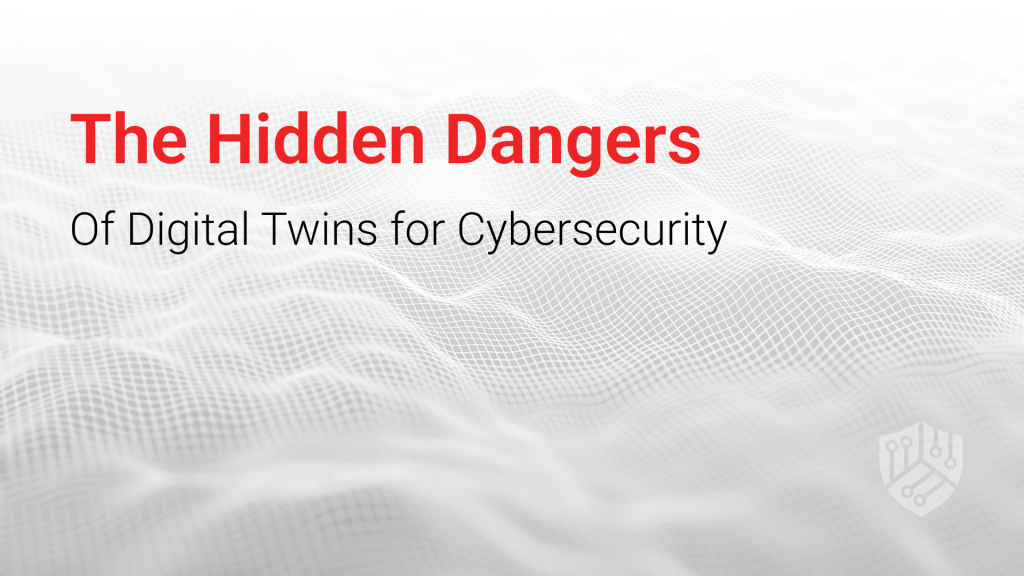November 3, 2025
The Hidden Dangers of Digital Twins for Cybersecurity

Digital twins revolutionise how businesses simulate, analyse, and optimise their operations. Companies in all industries are increasingly deploying virtual replicas of physical assets to drive efficiency and innovation. However, as adoption accelerates, the CyberFlow cybersecurity team has identified a critical challenge: digital twin cybersecurity vulnerabilities that could expose your entire organisation to devastating cyberattacks.
The reality is stark. Digital twins create an expansive attack surface that cybercriminals are actively exploiting. Understanding these digital twin security risks is essential for business survival in an increasingly connected world.
The Perfect Storm: Why Digital Twins Are Hacker Magnets
Digital twins operate at the intersection of several technologies:
- acquiring real-time data from physical assets
- process it through cloud platforms
- connecting with countless IoT sensors
- feeding insights back into operational systems.
This complex ecosystem creates multiple entry points for attackers.
The data flowing through digital twin systems is extraordinarily valuable:
- real-time operational parameters
- proprietary algorithms
- business intelligence
- system vulnerabilities.
For cybercriminals, a compromised digital twin is like finding a master key that unlocks everything from intellectual property to physical control systems.
What makes digital twin security particularly challenging is the convergence of IT and operational technology. Traditional cybersecurity measures designed for information systems often fail to address the unique risks posed by cyber-physical systems that can impact real-world operations and even human safety.
Critical Vulnerabilities That Keep CISOs Awake
Unauthorised Access and Data Theft
Digital twins store huge quantities of operational data representing years of business intelligence and competitive advantage. Without robust authentication mechanisms, attackers can infiltrate these systems to:
- steal sensitive information
- manipulate data
- establish persistent backdoors for future exploitation.
Multi-factor authentication and role-based access controls are no longer optional—they’re basic requirements for digital twin deployments.
IoT Device Security Weaknesses
Digital twins depend on continuous data streams from connected sensors and devices. This is where IoT device security becomes paramount. Many IoT devices ship with default passwords, lack encryption capabilities, and rarely receive security updates.
A single compromised sensor can provide attackers with a foothold to infiltrate the entire digital twin infrastructure. The interconnected nature of these systems means that the weakest link determines your overall security posture.
Cloud Infrastructure Vulnerabilities
Most digital twin platforms operate in cloud environments, introducing IoT cloud security challenges that organisations often underestimate. Misconfigurations in cloud settings, weak API authentication, and inadequate access controls can expose entire digital twin ecosystems to unauthorised access.
The shared responsibility model of cloud security means organisations cannot simply rely on their cloud provider—they must actively secure their digital twin implementations.
Data Manipulation and AI Poisoning
Perhaps the most insidious threat involves attackers manipulating the data that digital twins consume. By subtly altering sensor inputs or corrupting training data for AI models, hackers can cause digital twins to produce misleading insights and flawed predictions.
Building a Fortress Around Your Digital Twins
Protecting digital twins requires a multi-layered security approach that addresses every component of the ecosystem.
Encrypt Everything, Everywhere
Data encryption must be enforced at every stage—during transmission between devices and platforms, at rest in storage systems, and within cloud environments. Strong encryption protocols like TLS should be non-negotiable for all communications involving digital twin data.
Harden IoT Device Security
Regular firmware updates, replacing default credentials, and network segmentation are essential. IoT devices supporting digital twins should operate on isolated networks, preventing attackers from using them as springboards to critical systems.
Implement Continuous Monitoring
AI-powered security tools can detect anomalous access patterns, unusual data flows, and potential manipulation attempts in real-time. Automated alerts and detailed logging enable rapid incident response before minor breaches escalate into major disasters.
Secure APIs and Cloud Configurations
Regular security audits of cloud infrastructure, robust API authentication mechanisms, and rigorous data validation help close common attack vectors that cybercriminals routinely exploit.
Don’t Wait Until It’s Too Late: Secure Everything with CyberFlow!
When physical and digital systems are merged in digital twin technology we see unprecedented efficiency—and unprecedented risk. CyberFlow’s cybersecurity experts know how to identify digital twin vulnerabilities, while our advanced protection solutions ensure your virtual and physical assets remain secure.
Contact us today to build a resilient cybersecurity strategy that protects your company from ever-evolving cyber threats!
About Us
If you are interested on apply more security to your business contact us
